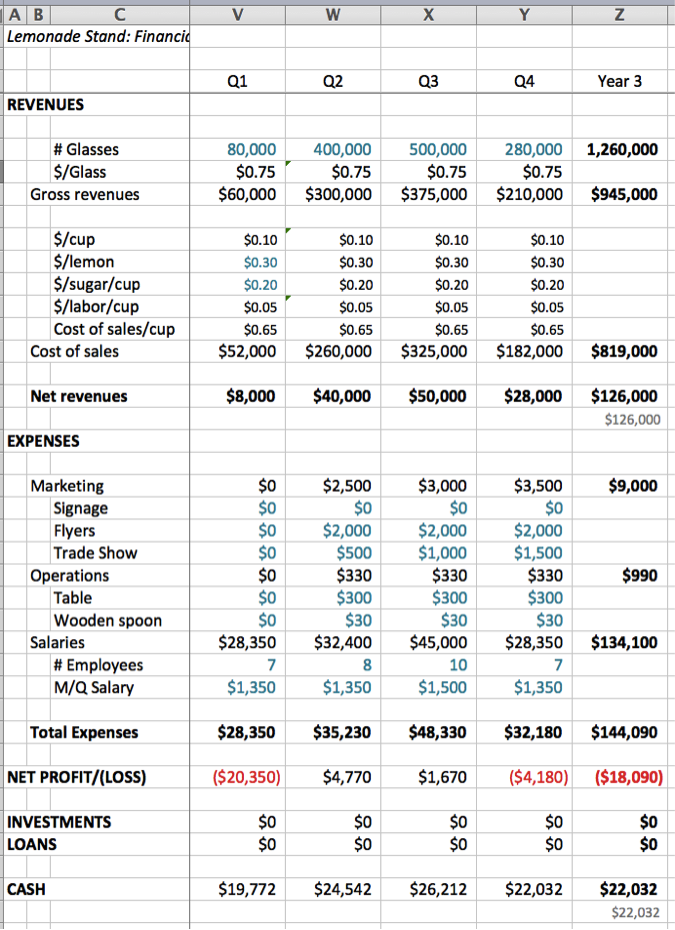Next, we fill out the projections for Year 3. For the lemonade plan, three years is sufficient. For your business, if you can predict out five years, then keep going and add Years 4 and 5.
For this lemonade plan, Year 3 looks a lot like Year 2. Total sales are projected to grow 25%, and the expenses are modified to match.
Year 3 again includes the seasonable nature of the business, with one new idea in the model. We now adjust the number of employees according to the season.
Looking at the annual summaries, the most unbelievable part of Year 3 is that the total expenses for marketing and operations are unchanged from Year 2. Comparing the quarterly values for the two years, it becomes clear that Year 3 is just a copy of Year 2.
It is in fact easiest to add each subsequent year to the financial plan by coping the columns of one year to create the next year. If you do this, do make sure you go back row by row and cell by cell to update the values so they match the expected growth in the new year.












